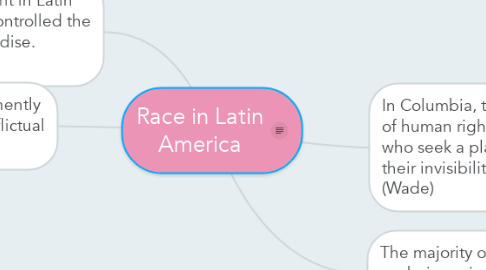Race in Latin America
by Sabrina Sakay

1. Chinese labor was the most prominent in Latin American movements as they later controlled the trade in goods and general merchandise. (Hu-Dehart)
1.1. Chinese laborers were imported to Cuba and Peru to substitute for African labor that was lost with the abolition of slavery.
2. Racial formation, a process of permanently contested social institutions and conflictual identities. (Winant)
2.1. UNESCO, focuses on the concept of racial democracy and the ideology of the whitening process.
3. In Columbia, the mobilization of black people surrounds issues of human rights and racial discrimination. These minority people who seek a place of culture and power challenges the idea of their invisibility as a whole as well as their ethnic solidarity. (Wade)
3.1. Ethno-Orientalism: concept by James Carrier, an essentialist construction by blacks of their own history and society. Supports the idea that the mixing process is a democratizing one.
4. The majority of the black Mexican population works in agriculture, fishing or construction, and overall have no economic power. (Yanga)
4.1. Blacks are marginalized and excluded. It is practically impossible for them to seek constitutional recognition.


